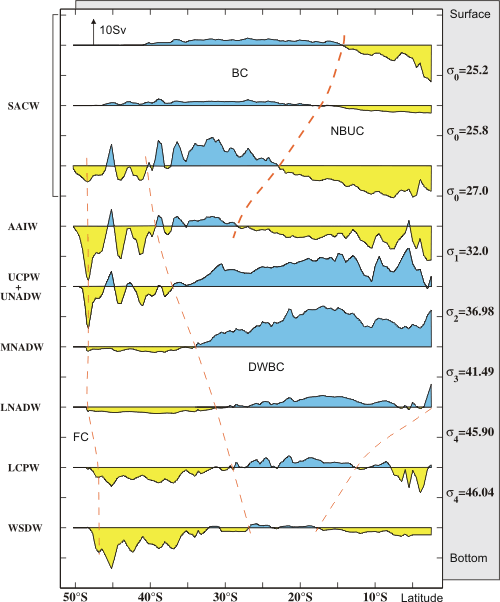
Figure 6: Meridional distribution of the alongshore transports inshore of A17 (positive southward) in 9 isopycnal layers representative of the major water masses. FC: Falkland Current; DWBC: Deep Western Boundary Current; BC: Brazil Current; NBUC: North Brazil Undercurrent. UNADW, MNADW, LNADW give the classical division of the NADW into its upper, middle, and lower components |
The
breakdown of the alongshore transports per water masses (Fig 6) gives
the vertical and meridional arrangement of the main boundary currents.
At the southern end of the section, the barotropic Falkland Current
stands out, slightly wider in the two lower layers (the negative peak at
45°S was an eddy). The
Brazil Current originates at 14°S in the upper layer, a southward
displaced latitude probably due to the averaging between A17 and the
coast. It is progressively reinforced by deeper contributions toward the
south. At 28°S, the disappearance of the northward flowing layer of
AAIW which separates the southward flows of SACW and NADW farther north
causes a thickness increase of the Brazil Current, down to the base of
the MNADW. The northward intensification of the NBUC is particularly
pronounced to the north of 5°S through the adjunction of the central
branch of the South Equatorial Current. The
southward Deep Western Boundary Current extends downward to the bottom
around 15°S-25°S. Although the uncertainties render the transport
estimates of the deepest layer not significantly different from zero in
this region, this observation corroborates previous results (e.g. Hogg
and Owens, 1999; Weatherly et al., 2000), and suggests an eastward shift
of the northward boundary current of AABW at these latitudes.
|